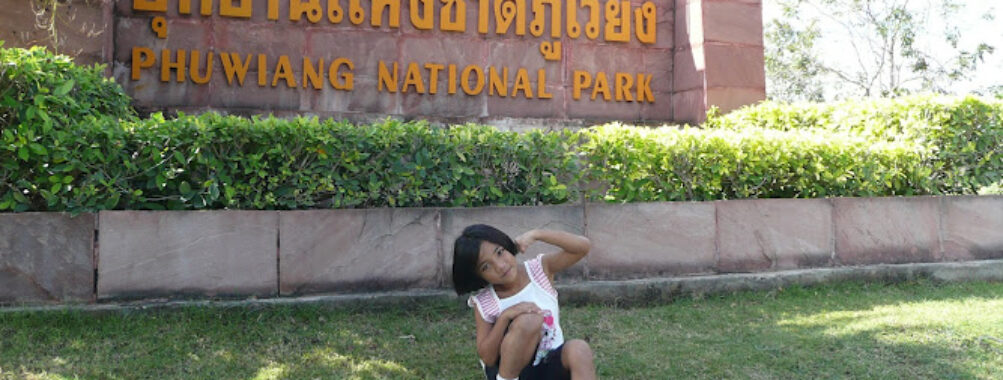
Phu Wiang National Park
Table of Contents
Description
Phu Wiang National Park in northeastern Thailand is the kind of place that makes you feel like you’ve stepped into two different worlds at once – one ancient and prehistoric, the other wild and rugged. It’s famous for its dinosaur fossils, some of which are still embedded in the rock where they were discovered, and others displayed in a dedicated museum that’s surprisingly engaging even if you’re not a hardcore paleontology buff. The park sprawls across a huge area of forested hills, streams, and rocky outcrops, so there’s plenty of space to wander, breathe in the fresh air, and get a little lost (in a good way).
While it’s not the most manicured or overly commercialized park in Thailand, that’s part of its charm. You’ll find marked trails, picnic spots, and clean public restrooms, but you won’t be tripping over souvenir stands every 50 meters. The hiking is varied – some trails are gentle enough for kids, others will leave you sweaty and satisfied. And for those who like to linger, there’s a camping area where you can fall asleep under a ridiculously starry sky.
Not every visitor walks away blown away – some expect more flashy attractions – but for travelers who enjoy nature, history, and a bit of quiet exploration, it’s a gem. The mix of dry dipterocarp forest, bamboo groves, and seasonal streams creates a landscape that changes with the months, and the wildlife sightings can be a pleasant surprise. If you’ve ever wanted to stand in a place where dinosaurs once roamed, this is about as close as it gets without a time machine.
Key Features
- Multiple dinosaur fossil excavation sites with interpretive displays
- On-site dinosaur museum with life-sized reconstructions
- Varied hiking trails, from kid-friendly walks to challenging treks
- Camping facilities for overnight stays
- Picnic tables and shaded rest areas
- Wheelchair accessible entrance and parking
- Forests ranging from dry dipterocarp to bamboo ecosystems
- Streams feeding into the Ubolratana Reservoir
Best Time to Visit
From personal experience – and after a few sweaty mistakes – the cooler, drier months between November and February are the sweet spot. The air is crisp in the mornings, the trails aren’t muddy, and you can hike without feeling like you’re melting. March through May can be brutally hot, and unless you’re a fan of heatstroke, I’d steer clear of long midday hikes during that period. The rainy season (June to October) has its own charm, with lush greenery and flowing streams, but be prepared for slippery paths and the occasional leech. If you’re into photography, the post-rain light in the late afternoons is pure magic.
How to Get There
Phu Wiang National Park is in Khon Kaen Province, and the most convenient base is the town of Chum Phae. From Khon Kaen city, it’s roughly a 90-minute drive. If you’re not renting a car, you can grab a bus or minivan to Chum Phae and then hire a local songthaew or motorbike taxi to take you into the park. Public transport will only get you so far, so some degree of private transport – even if it’s just for the last stretch – makes life easier. The roads are generally in good shape, but keep an eye out for sharp curves when you get into the hilly sections.
Tips for Visiting
First off, bring water. A lot of it. The trails can feel longer than they look on the map, and there’s not always a shop nearby. Wear sturdy shoes – I’ve seen more than one person attempt a hike in flip-flops and regret it halfway through. If you’re visiting with kids, the shorter fossil trail near the museum is a hit; it’s educational without being exhausting. For those camping, pack a light jacket – the nights can get surprisingly cool even in the dry season.
Also, don’t rush. It’s tempting to tick off the big fossil sites and call it a day, but some of the smaller trails and viewpoints are where the park really shines. If you have time, go early in the morning; you’ll beat the heat and maybe spot some wildlife. And yes, the museum is worth it – it’s not huge, but it’s well done and gives you context for what you’re seeing out in the field.
Lastly, be respectful of the fossils and the environment. This isn’t the kind of place where you can pocket a rock as a souvenir – everything here tells a story millions of years in the making. Treat it like the living (and ancient) treasure it is, and you’ll walk away with more than just photos.
Location
Places to Stay Near Phu Wiang National Park
Find and Book a Tour
Explore More Travel Guides
No reviews found! Be the first to review!